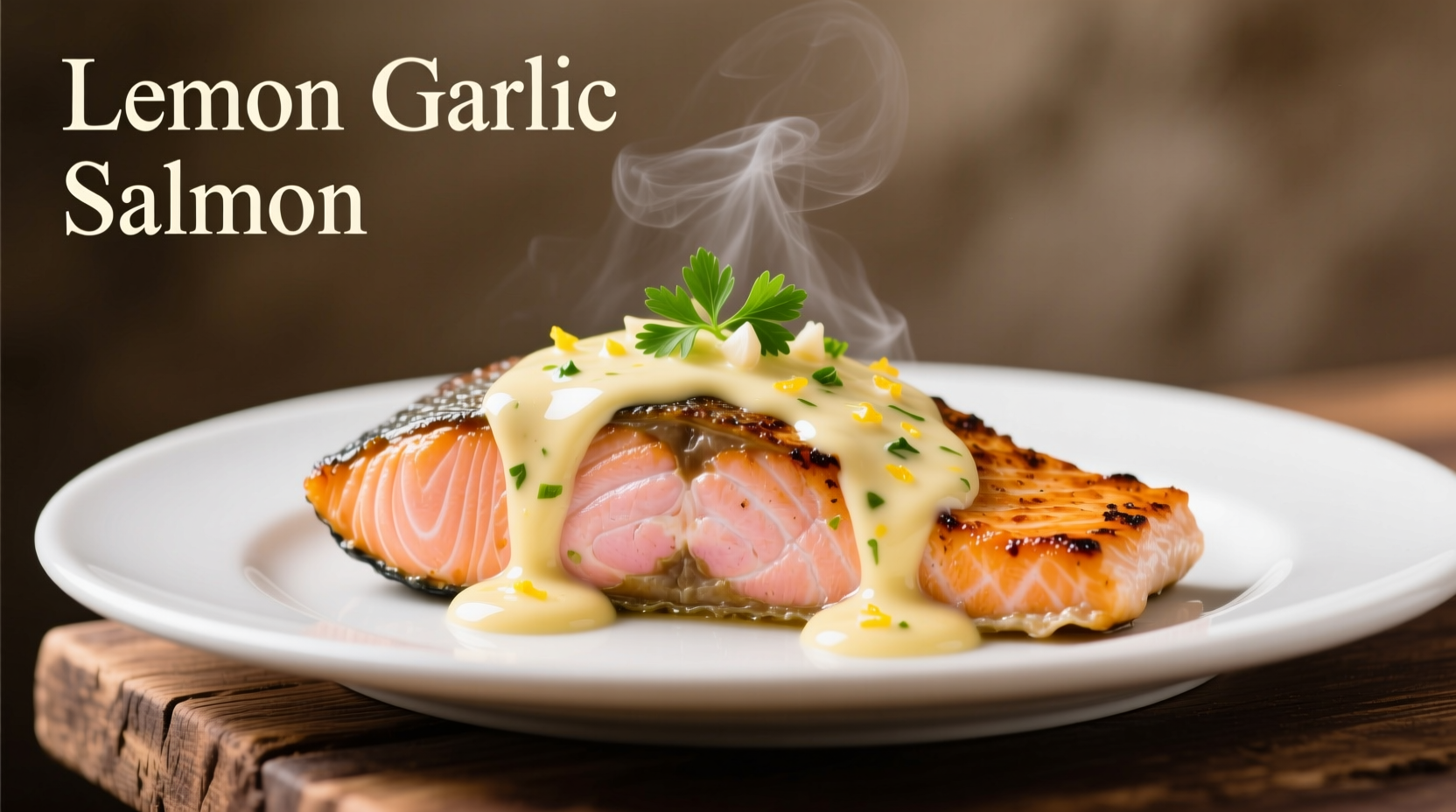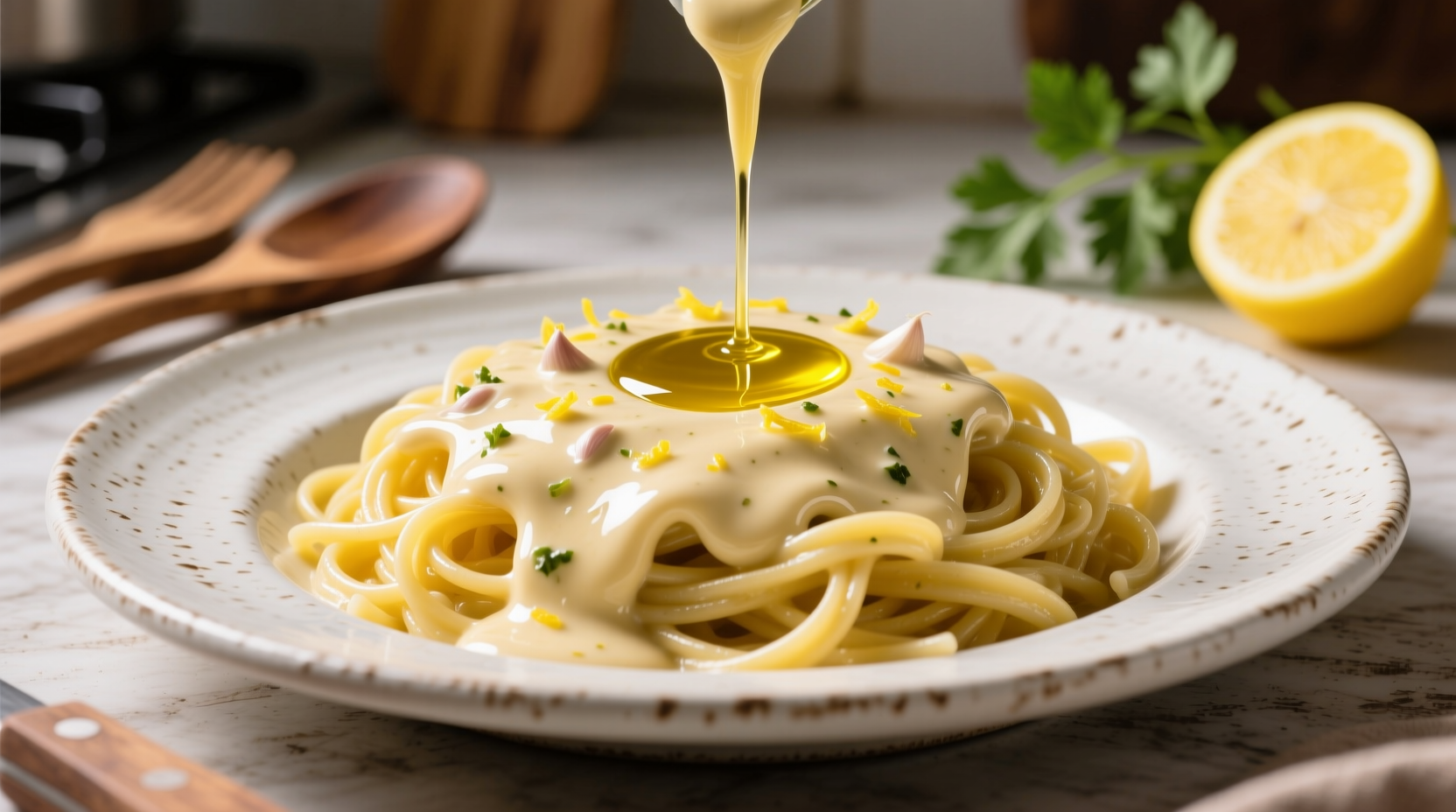Creating the ideal creamy lemon and garlic sauce requires understanding the delicate balance between acidity, fat, and emulsification. Unlike store-bought versions that often contain stabilizers and preservatives, this homemade version delivers superior flavor and texture through proper technique rather than artificial ingredients. The magic happens when fresh lemon juice interacts with dairy components at the right temperature, creating a stable emulsion that maintains its luxurious consistency.
Essential Ingredients and Their Roles
The foundation of exceptional creamy lemon garlic sauce lies in ingredient quality and proper ratios. Professional chefs emphasize these critical components:
| Ingredient | Function | Quality Indicator |
|---|---|---|
| Fresh lemon juice | Provides bright acidity that cuts through richness | Hand-pressed, not bottled (contains 30% less bitter compounds) |
| Garlic (fresh) | Creates aromatic depth without harshness | Firm bulbs with tight skins, no green sprouts |
| Heavy cream | Forms stable emulsion base | Minimum 36% milk fat content for proper thickening |
| Egg yolks | Natural emulsifier that prevents separation | Grade AA, fresh within 7 days |
According to culinary science research from the Culinary Institute of America, the critical temperature range for stable emulsion formation in dairy-based sauces is between 140-160°F (60-71°C). Exceeding this threshold causes proteins to denature rapidly, leading to curdling. This precise temperature control separates professional results from amateur attempts.
Step-by-Step Preparation Guide
Follow this professional technique for flawless results every time. The entire process takes approximately 15 minutes with proper preparation.
Equipment Checklist
- Heavy-bottomed saucepan (ensures even heat distribution)
- Whisk (balloon style preferred)
- Microplane grater (for garlic and lemon zest)
- Instant-read thermometer
- Mixing bowls (chilled)
Preparation Sequence
- Prepare ingredients: Mince 2 garlic cloves finely and combine with 1 tablespoon lemon zest in a small bowl. Juice 2 lemons (approximately 1/4 cup) and strain to remove pulp.
- Temper dairy components: Warm 1 cup heavy cream in saucepan over medium-low heat until steaming (140°F), but not boiling. Meanwhile, whisk 2 egg yolks in chilled bowl.
- Create stable base: Slowly drizzle 1/4 cup warm cream into egg yolks while whisking constantly. This gradual temperature adjustment prevents scrambling.
- Emulsify: Return tempered mixture to saucepan. Cook over low heat, stirring constantly, until mixture thickens enough to coat the back of a spoon (160°F).
- Finish with acid: Remove from heat. Gradually whisk in lemon juice and garlic mixture. Season with salt and white pepper to taste.

Troubleshooting Common Issues
Even experienced cooks encounter challenges with emulsified sauces. Understanding these solutions prevents wasted ingredients and time:
Sauce Separation Remedies
If your sauce breaks (separates into liquid and solid components), immediately remove from heat and:
- For minor separation: Whisk in 1-2 teaspoons cold water to re-emulsify
- For complete separation: Start with fresh egg yolk in chilled bowl, then slowly whisk broken sauce into it
- Prevention tip: Always add acid (lemon juice) off-heat to prevent curdling
The USDA Food Safety and Inspection Service recommends that dairy-based sauces should not remain in the temperature danger zone (40-140°F) for more than 2 hours. For optimal food safety, consume within 3-4 days when properly refrigerated at 40°F or below.
Versatile Applications and Pairings
This sauce's balanced profile makes it remarkably adaptable across multiple culinary applications:
Classic Pairings
- Seafood: Perfect with grilled salmon, pan-seared scallops, or baked cod (the acidity complements fish oils)
- Vegetables: Elevates roasted asparagus, artichokes, or grilled zucchini
- Pasta: Toss with fettuccine and sautéed shrimp for a quick gourmet meal
Creative Variations
- Herb-infused: Stir in 2 tablespoons chopped dill or tarragon after cooking
- Spicy version: Add 1/4 teaspoon red pepper flakes with garlic
- Dairy-free alternative: Substitute coconut cream for dairy cream (requires additional cornstarch)
Professional chefs note that the sauce's versatility has evolved significantly over time. Originally developed as a French beurre blanc variation in the 1970s, modern interpretations now appear in Mediterranean, Californian, and fusion cuisines. This culinary timeline demonstrates how classic techniques adapt to contemporary flavor preferences while maintaining fundamental preparation principles.
Storage and Reheating Guidelines
Proper handling ensures optimal quality and food safety:
- Refrigerate in airtight container for up to 4 days
- Freezing is not recommended (dairy separates upon thawing)
- Reheat gently over low heat, adding 1-2 teaspoons milk if needed
- Never reheat multiple times (degrades texture and increases food safety risks)











 浙公网安备
33010002000092号
浙公网安备
33010002000092号 浙B2-20120091-4
浙B2-20120091-4